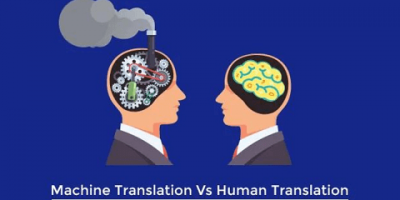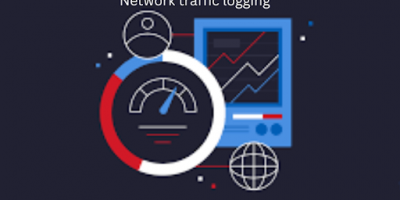Software as a Service (SaaS) is a type of cloud computing that aims to revolutionise traditional on-premise technology. While traditional on-premise software is installed and stored onto a device, SaaS is hosted online and delivered to users over the internet. SaaS solutions can include anything from data storage systems to payroll software.
While the adoption of SaaS has grown over the years, the COVID-19 pandemic has propelled the need for better ways of working. SaaS facilitates new ways of working seamlessly, including a shift to the home office overnight. As a result, many businesses are undergoing digital transformation to make their processes more efficient and streamlined.
Cloud computing is the future of technology, and rapid change is taking place today. In fact, a study showed that 91% of IT leaders have changed their cloud strategy as a result of the pandemic. Read on to discover how switching to SaaS can make businesses more streamlined.
Remove the need for downloads
There’s no reason why important work should be delayed due to hefty downloads and updates. Many workers will postpone key updates to avoid the burden, while doing so can open up systems to security and support risks.
SaaS products roll out updates across the cloud so that the next time a user loads up the software, it will be running the latest version. This includes crucial functionality updates and patches, which results in a smoother experience with fewer bugs and delays.
In some cases, this also means devices run faster due to no storage requirements and syncing upon start-up. As no dedicated storage is required, high tech devices aren’t required to run cloud-based software.
Reduce the need for ongoing management
With SaaS products, the server and system are managed by the vendor. This also includes associated requirements such as cybersecurity and GDPR compliance. This means you can save money and avoid the hassle associated with on-premise products.
On-premise software often requires a server located at the business’s office, which can be expensive to set up and tricky to maintain. With dependence on the office decreasing, SaaS offers a flexible approach to using software simply through an internet browser. Plus, support should be on hand for customers in most cases.
If you purchase on-premise B2B software you’ll need:
- An internet connection (depending on the solution)
- A desktop or laptop with adequate RAM
- An IT team
- Cybersecurity
- A server (in some cases)
Whereas, with SaaS software you only need:
- An internet connection
- Any device
Scale software with your business
No amount of forecasting could have accounted for the pandemic. However, cloud-based products offer the most flexible options for businesses at times of change.
If a business grows or downsizes, SaaS will adapt to its needs. Plus, if a workforce is stretched, a solution that’s maintained by the vendor is the simplest way to stay efficient.
As storage isn’t the business’s responsibility, and SaaS vendors invest heavily in storage infrastructure, the data limit can be endless. Alternatively, there may be banded options to choose from which can be switched at any time.
Meanwhile, traditional systems come with storage limitations; and if there are solutions for this, they often come at a cost – taking us onto the next point.
Pay less and on a flexible basis
The coronavirus pandemic has taught us to expect the unexpected, and SaaS offers a simple way to reduce expenditure and reinvest elsewhere in a business. A study by Netsuite concluded that organisations using cloud systems saved around 20% on IT spending.
On-premise software often comes with high upfront costs and ongoing charges for updates. This can often create a sense of need for the business to continue using it to justify the investment. However, the additional resources required to maintain on-premise software can easily be stripped out by switching to SaaS.
SaaS is generally on a subscription basis with monthly payments, and initial costs are free or low cost. This also means that if a solution isn’t suitable, there’s more flexibility in switching – depending on the contract. Plus, updates and new versions will most times be rolled out across the cloud, free of charge.
Access anytime, anywhere
Perhaps the most pertinent benefit of SaaS in 2020 has been its ability to run on any device and anywhere with an internet connection. Earlier in the year, this enabled businesses to resume work from home without disruption, while those who failed to adapt were forced to find new ways of adjusting.
Remote working isn’t temporary either, with 68% of workers wanting to continue to work from home in the future. As the way we work slowly shifts, B2B technology needs to adapt too. That also includes online collaborative working to save time and prevent duplication of work.
On the other hand, on-premise software can only be accessed on dedicated devices, and sometimes only in the office depending on server requirements – unless a VPN is set up. Not only is this unsuitable for remote working, but it also triggers security challenges if a device is stolen or broken.
To summarise
In 2020, businesses have transformed their operations quicker than ever before. As a result, this has highlighted ways in which existing technology isn’t up to scratch and how processes can be made more efficient.
Cloud computing has been big news in technology for many years, but with the need to transform digitally, it’s become a key consideration for decisionmakers. Here’s how SaaS has helped businesses to adapt to new ways of working during COVID-19:
- Eliminates time-consuming downloads, increasing efficiency
- Automatically rolls out upgrades and patches
- No storage requirements, allowing work to be completed more smoothly
Minimal responsibility required to maintain the system and surrounding security, reducing pressure on internal teams
- Cuts out the associated costs of on-premises software, instantly increasing profits
- Adapts to businesses’ growing or shrinking needs, making it prepared for the unprepared
- More flexible costs with reduced contractual commitment to software vendors
- System can be accessed anytime, anywhere, to fit around remote working
The future is gearing towards remote working and rented office space – and SaaS supports this shift in how we conduct business.













Comments